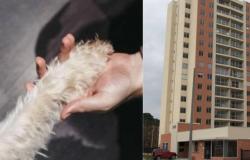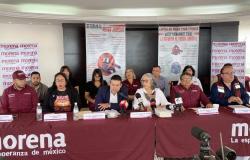More than a hundred penguins dead, 175 nests destroyed and around 2050 square meters of vegetation cleared These are some of the damages caused to build a road in the fauna reserve Tombo Point.
Aggravated environmental damage to the ecosystem and cruelty against animals are the charges faced by Ricardo La Regina, the owner of the La Perla ranch, who destroyed a nesting area in one of the most important colonies of Magellanic penguins in the world in the middle of the reproductive seasoncrushing and compacting hundreds of specimens with a backhoe.
“He did everything he shouldn’t: clear the vegetation and build small dams to provide it with water. It will take more than 35 years to recover the damage done to the ecosystem of a protected natural area of the Patagonian steppe,” says the prosecutor in the case, Dr. Florencia Gomez.
The person who initiated the lawsuit is Alfredo La Regina, owner of the neighboring ranch and uncle of the accused.who upon noticing the damage at the La Perla ranch, intervened with the environmental authorities of the province and Dr. Pablo García Borboroglu, a reference and creator of the Global Penguin Society (GPS), an international organization dedicated to the conservation of penguins in the world.
On November 26, 2021, Specialists Borboroglu and Laura Reyes carried out the first survey to determine the damage and were able to confirm the seriousness of the issue.. With this information, the day after the depredation, they filed a complaint with the Rawson prosecutor’s office and on the 27th, at the request of prosecutor Florencia Gómez, the raid of Punta Clara was carried out (the place where the events occurred and which is a biological unit with Punta Tombo, core of the UNESCO Biosphere Reserve Patagonia Azul).
In that first evaluation, Dr. Gómez details, The layout of a 190 meter path was verifiedbetween 30 and 40 cm wide, the dismantling of a nesting sector of the Magellanic penguin colony that houses almost 40% of the world’s total and the placement of an electrified fence less than 20 cm from the ground.
It was also possible to determine the destruction of around 146 nests, the death of 292 chicks and the presence of affected cows. “The fence divided the neighborhood in two. The nest has two eggs and an adult who takes care of them, while another looks for food in the sea. If upon returning she cannot reach the nest, it becomes a death trap,” explains Dr. Gómez, who from November 2021 to today has become an expert in the field.
The resonance that the case reached was such that it took on an international dimension.
Immediately, Various organizations – Greenpeace, Patagonia Natural Foundation and the Argentine Association of Environmental Lawyers – joined as plaintiffs.– and a report was prepared with the intervention of specialists in soil, vegetation and fauna of the Nation, the Scientific and Technological Center, CONICET, the National Patagonian Center (CENPAT), National Geographic and Disney.
The obstacles were many: the size of the area to be surveyed, the judge’s initial refusal to enable the investigation and her subsequent recusal for being the wife of a member of the law firm that defended the accused in the case, among other things that delayed the case for months.
The technical reports made initially were corroborated with satellite images. The unusual participation of organizations such as National Geographic and Disney – which until then had not intervened in criminal proceedings – was key since it allowed us to access high-definition images showing the day and time of the events that allowed us to obtain exact details. of what happened.
“Thanks to this information we were able to determine that the backhoe had been used on the land between November 26 and December 4, in full nesting,” says Gómez and explains why it is important to determine the moment. “La Regina stated in an interview that she had opened the road in the month of July 2021. That is why it is essential to prove that the events occurred in November, which is why the backhoe had to pass over the specimens,” she explains. .
Furthermore, also They were able to verify the lifting of 40 cm of the surface layer of the ground and, taking into account that penguins make their nests in caves, it is out of the question that they were destroyed. This invalidates the defense’s argument that there is no evidence.
“Finding dead specimens is almost impossible, we take into account that the chicks weigh 100 grams and were destroyed or were buried in the middle of the earth,” says the prosecutor and smiles when remembering that at the hearing the defender asked that evidence of the crime.
In short, what at first seemed like a drawback became a benefit since it allowed material to be collected through drones and photographs and expanded the accusation.
Three raids, eight expert reports, the testimonies of national and international specialists, the collaboration of institutions, officials, geographers, image analysts, photographers and drones, among others, bore fruit and the guarantee judge Karina Breckle considered that the arguments presented by the prosecution were sufficient to go to an oral and public trial. The complainants hope that it will be finalized before the end of the year.
The lack of a specific national law that is included in the Penal Code implies that there are no tools that allow judging and condemning according to the magnitude of the facts.. This is the reason why he had to use the classification of aggravated damages in a real competition with cruelty towards animals.
“This is a law from 1954, the Sarmiento Law, which is completely obsolete. The legal classification has a very low penalty: it is only classified as animal cruelty. In other words, not feeding a dog is the same as destroying 175 nests and killing almost 300 chicks,” explains Gómez, who confesses that he spent months exhaustively studying the a case that he described as “extremely cruel.”
And he maintains: “We need a national law that protects flora and fauna, native or non-native. I make this clarification because the penguin comes for six months to reproduce and leaves, but it must be protected at the national level as it is internationally.”
Regarding expectations, it hopes to achieve that the figure of ecocide is configured at the national level, that the laws are severe and enforced effectively, and also that the recomposition is a significant fine, determined by a non-governmental organization. “I hope this case is a before and after. People must become aware that nature belongs to everyone, that we have the right to enjoy it but also the obligation to take care of it,” he concludes.






